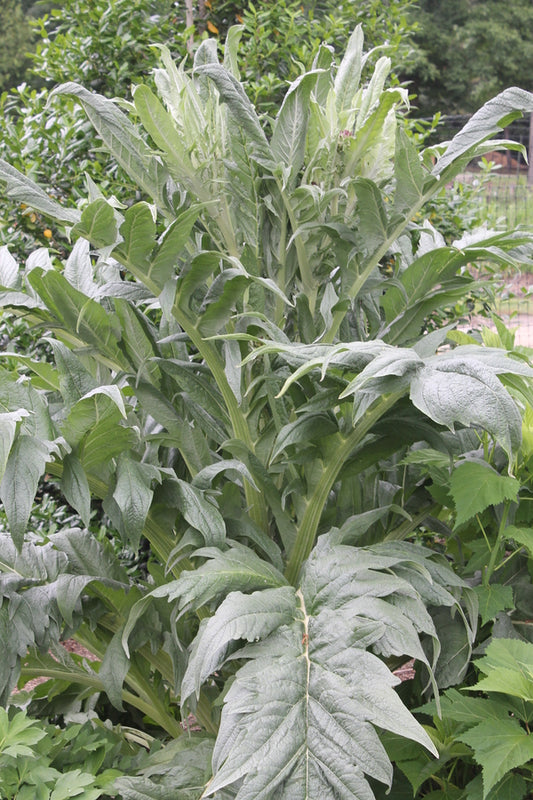Cynara flowers are an shocking electric blue color and are the size of tennis balls. These flowers attract butterflies. The combination of the two makes a fabulous garden specimen.
-
Cynara cardunculus
Item #: 4949
Zones: 7b to 9b
Dormancy: Summer
Height: 36" tall
Culture: Sun
Origin: Morocco
Pot Size: 3.5" pot (24 fl. oz/0.7 L)
Regular price $22.00Regular priceUnit price per
More Information About Cynara
Plants in the genus Cynara are closely related to thistles with their spiny leaves and unique flower heads. There are only 10 species in the genus, all native to the Mediterranean, Northern Africa, and the Canary islands. One species, Cynara scolymus, is grown as a perennial food crop known as globe artichoke. The immature flower buds (technically the receptacles and involucre bracts) are harvested, boiled, and eaten with lemon and butter...yummy. In addition, you can boil and eat the flower stalks and young leaves too.
Some taxonomists do not consider Cynara scolymus to be a valid species at all because it does not occur in the wild. Rather, they consider it to be an ancient subspecies of Cynara carduncularis (subsp. cardunculus) placed into cultivation for its especially large flower buds and thick flower stalks.
Cynara flowers are an incredible electric blue color and are the size of tennis balls. These flowers are butterfly magnets that sit atop a tuft of attractive silver-green leaves and the combination of the two makes a fabulous garden specimen. Both the flowers and leaves also look great in cut flower arrangements.
Cynara prefers to grow in full sun with a well-drained but consistently moist soil. If planted early enough and treated well, it may flower its first year. Excellent drainage and loose, light soils are vital to prevent Cynara from rotting during the winter. If you plant Cynara late in the year in a marginal climate, you may also need to provide additional protection from winter cold, such as a blanket made from landscape cloth. When you are ready to buy cynara for your garden, check out our online offerings of cynara for sale.


